James May’s Toy Stories Review
Written by Chris Warrell for our January 2010 Newsletter
Following on from his Top Toys programme four years ago, James May has now given us a whole series devoted to Hornby Trains, Scalextric, Lego, Plasticine, Airfix and, of course, Meccano.
Most, if not all, of you will have watched the programme on Meccano where a team of university students constructed a Meccano bridge to span an extension of the Leeds and Liverpool Canal in Liverpool. The pair of graduates who came up with the concept called it the bridge of no return because, as you will have seen when James walked across it, the bridge was in two halves, the first half being almost boomerang shaped such that it rolled forward with his weight. A counterbalance was gradually drained of water to allow this to happen, but as soon as he stepped off, the bridge rolled back, leaving him on a shorter swing section which carried him the rest of the way.

James May walks across the Meccano bridge
The programme was highly entertaining and, for the general public not familiar with Meccano, gave a short history of the system, and a look at Jim Gamble’s collection which is in his loft.
It proved that Meccano is real engineering in miniature, because the bridge, although only 14 inches wide and two feet deep, was able to span the 36 plus feet of the canal and support James May without any trouble at all. I can see why he had the safety harness, though — it looked somewhat precarious!
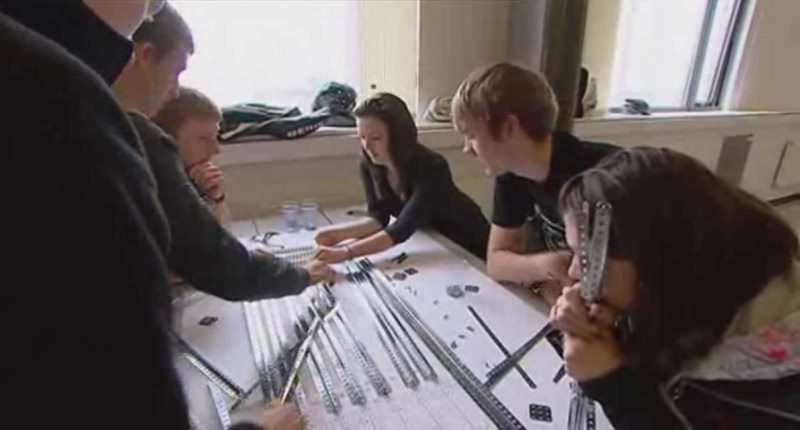
Students from the University of Liverpool build the bridge
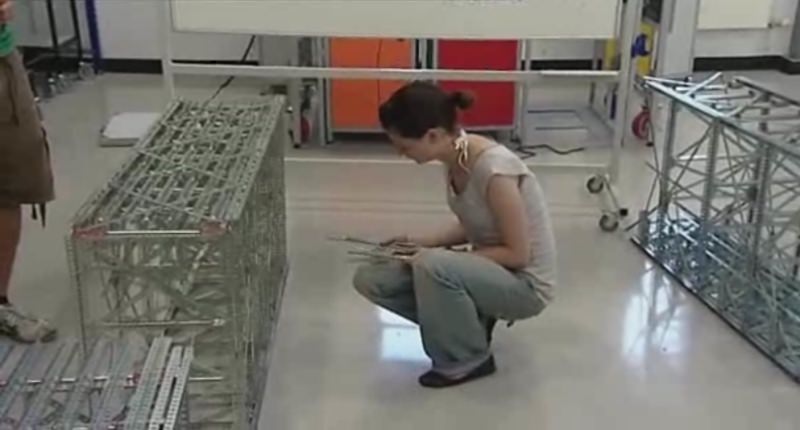
A student from the University of Liverpool building the bridge
Other programmes in the series have been equally fun to watch. They’ve been very popular as well, with the first two shows taking the top slot for BBC2, the next two being beaten only by Top Gear. The Meccano programme gained a respectable 3.86 million viewers. Most popular at the time of writing (ratings for the two Christmas episodes have not been published yet) was the Scalextric recreation of the Brooklands race track. There are rumours of a second series — perhaps they might have another go at the Meccano car that they were suggesting at the start of the project before they settled on the bridge idea.
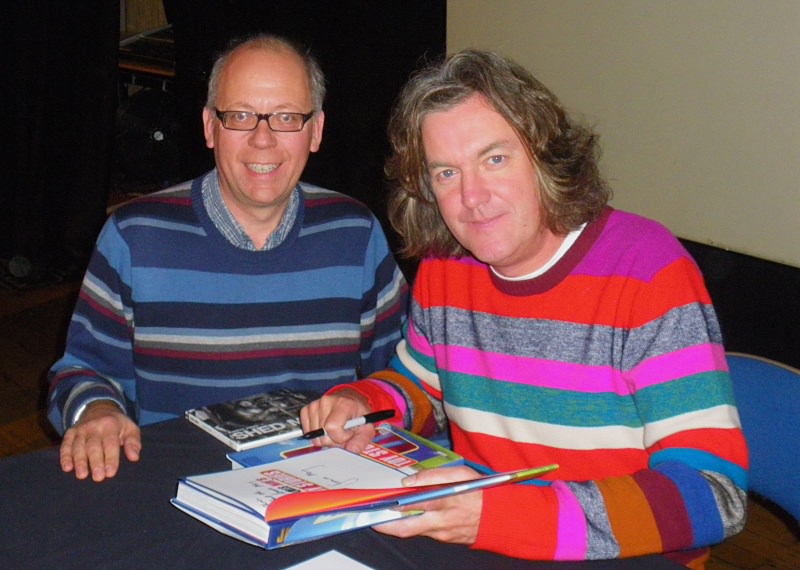
The great man himself — and some bloke called James May!
Tied in with the series was a one day toy show at the Camden Centre, opposite St. Pancras Station on Saturday 28th November. The entry price of £20 might seem a bit steep, but for that you got a free signed copy of the book of the series (priced at £20, although available at Amazon for £10). Children were admitted free — not much use to me; I don’t have any of the right age.
I turned up at around 2:30pm (having had a commitment earlier that day) to find the main hall in the Centre full of people, with lots of children rushing around from one activity to the next. On the stage James May was half way through the book signing, the queue of which snaked its way around the hall. I joined it later on when it had got a bit shorter having persuaded the staff at the rear of the queue to let me in — a number of other visitors did the same and the staff gave up trying to keep the queue from growing.
I was pleased to see that the Meccano Liver Bird was proudly standing on a table on the left side of the stage — one of only a few artefacts from the TV series to make it to Camden. At the back of the stage was a screen showing episodes from the series on a continuous loop.
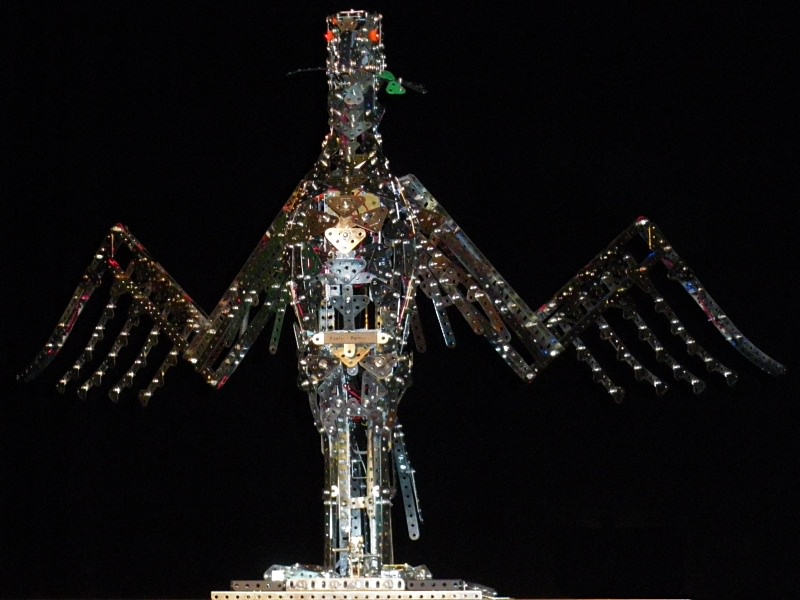
The Meccano Liver Bird
Around the hall was a different area for each of the six toys featured in the programmes: you could enter a Meccano model building competition; admire a Hornby model railway layout; make your own Airfix model; build a Lego model; create your own Plasticine flowers; race against other visitors on a Scalextric circuit.

A general view of the toy fair
I couldn’t get near the plastic kit building area (by the way, how many of you bought the Airfix Spitfire after seeing the first programme?). Their stand was also selling kits and other branded items, including an attractive range of coasters with images from the classic range. I missed out on the Q & A session with James May which was earlier in the day.
On the Meccano stand was a table where you could build a small model from the Design range against the clock. The fastest three got a prize of a Meccano set, top prize being one of the Tuning sets and the third one of the new robots. There were also a number of built up remote control cars for children to play with, and these seemed to be very popular. Behind all this was Jim Gamble with a table full of models from his vast collection, mostly in red and green. There was a motor chassis, a set 10 robot man (10.27) who walked across the floor, much to everyone’s delight.
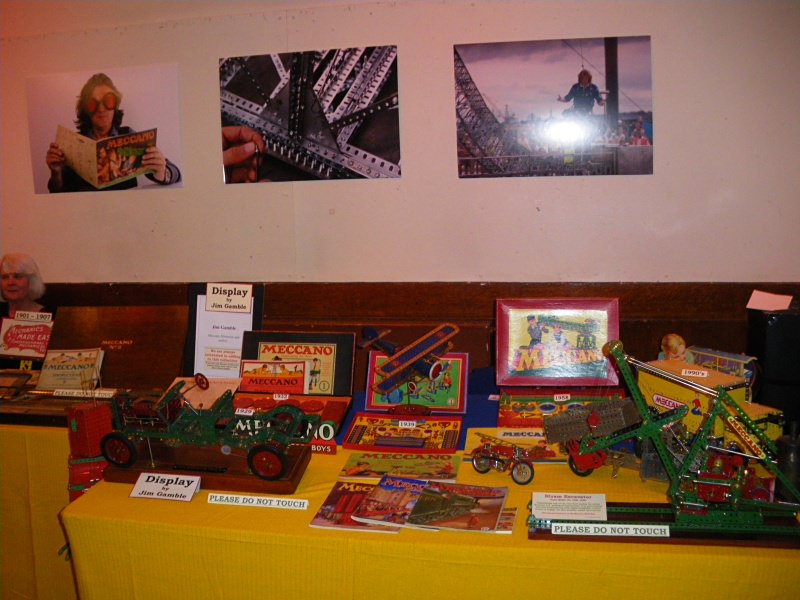
im Gamble’s display
I didn’t have a go at the Meccano building — if I won I’d deprive someone of a set that might open up a whole new hobby to them; if I lost it would just be embarrassing!
The Hornby Trains layout was impressive, with a large four track circuit with sidings and a station. There were several sets of the new 5-car class 395 South Eastern high speed trains running around, as well as some more traditional trains.
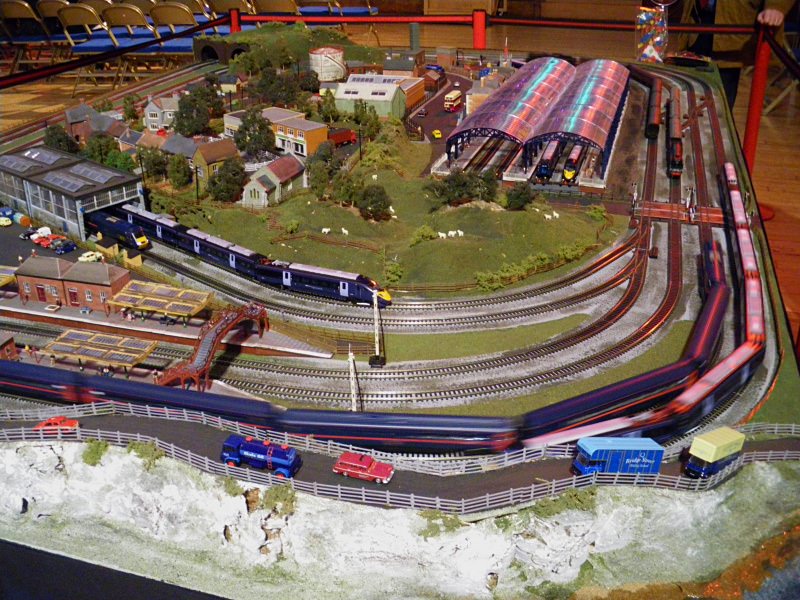
The Hornby railway layout
I had a go on the Scalextric track which uses a digital system similar to that on model railways: you can run several cars on the same track at the same time, each with its own controller. Four cars went around the track at a time. I was useless at this and came last in the heat I was in. The eventual winner was to have raced against James May, but I got the impression that he’d already left by the time they got to find a challenger.
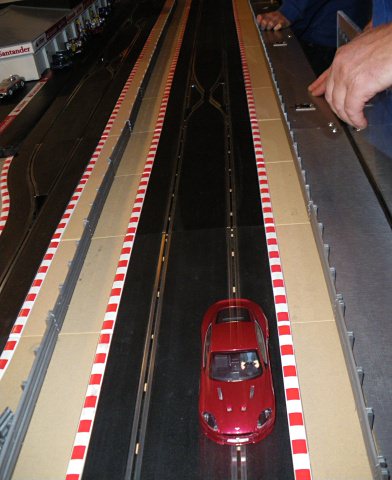
The Scalextric racing track
On the Lego stand was an area where you could build some models, plus various objects from the Lego house including the very lifelike portrait of Mr May.
I had a lengthy chat with Terry Harbutt, the great-grandson of William Harbutt — the inventor of Plasticine. He had a display of historical items from the original firm, including an old packet of the stuff that proudly stated that, amongst its uses, was sealing around windows in case of gas attacks!
It was a very enjoyable afternoon. It was sad to note that all the supposedly British toys (or originally British) are now made overseas with everything from the current Hornby stable (Trains, Airfix and Scalextric) being manufactured in China or India. But, at least they are still being made!
The book is more then just a TV tie-in. Written by James May with Ian Harrison, it is divided into six chapters; one for each programme. In each case there is a two page introduction to the toy. There follows a well researched history of the toy in question. In the Meccano section this runs to sixteen pages and goes into such details as the change of name to Meccano, the various colour schemes, and some of the more popular sets. Amongst the books listed in the bibliography were two books by Bert Love: The Meccano System and the Meccano Constructor’s Guide. The main section in each chapter looks at the problems that had to be overcome in making the idea a reality. If you have some Christmas money to spend, or some socks you didn’t want, take them back and get a refund and buy the book instead!